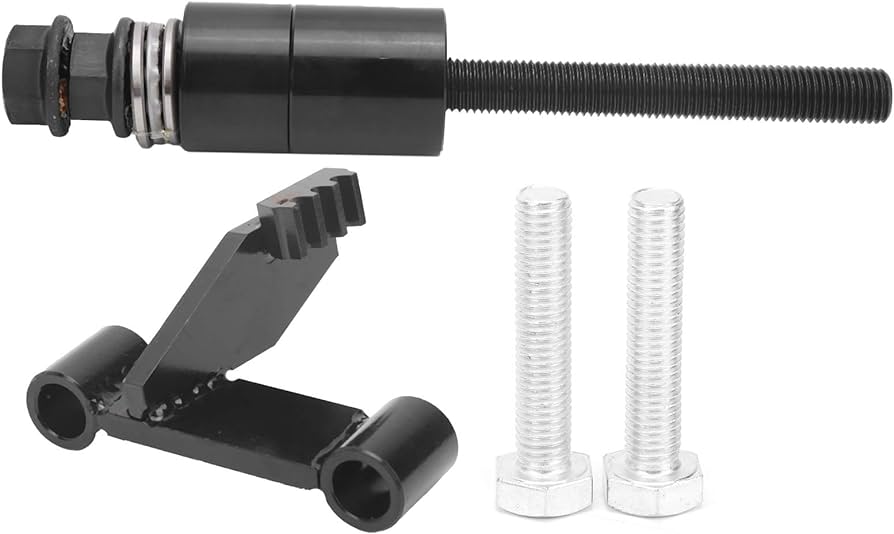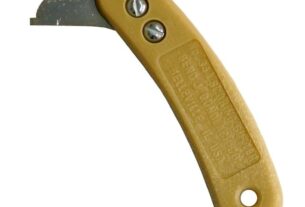If you’re a DIY enthusiast or a professional mechanic, you know that working on engines can be tough, but with the right tools, it’s less of a hassle. One such tool is the flywheel holding tool. This handy device can help you hold your engine’s flywheel in place while you loosen or tighten bolts without worrying about damaging other parts.
In this article, we’ll explain what a flywheel holding tool is, how it works, and why it’s essential for engine maintenance. We’ll also discuss different types of flywheel holding tools and provide some tips on choosing the right one for your needs.
What Is a Flywheel Holding Tool?
A flywheel holding tool is a device used to prevent the flywheel from rotating while you work on the engine. The flywheel is a large metal disk attached to the end of the crankshaft that stores rotational energy and helps maintain engine momentum. It’s also where the starter motor engages to start the engine.
When working on an engine, you may need to remove certain parts that are bolted onto the flywheel. Without a flywheel holding tool, it’s difficult to keep the flywheel stationary while loosening or tightening these bolts. Trying to do so can damage other engine components or even result in injury.
How Does a Flywheel Holding Tool Work?
A flywheel holding tool typically consists of two pieces – a clamp and a locking pin. The clamp attaches to the engine block or transmission using bolts or screws. The locking pin then goes through holes in the clamp and into holes in the flywheel itself, preventing it from turning.
To use a flywheel holding tool, first locate the appropriate holes in your engine block or transmission where you can attach the clamp. Then, insert the locking pin into the corresponding holes on the flywheel. Once everything is securely in place, you can begin working on the engine without worrying about the flywheel rotating.
Why Is a Flywheel Holding Tool Essential?
When working on an engine, it’s crucial to ensure that all parts remain in their proper positions. The flywheel is no exception. If it rotates unexpectedly while you’re working on the engine, it can cause other components to shift or become damaged. This can lead to costly repairs and downtime for your vehicle or equipment.
Using a flywheel holding tool provides peace of mind knowing that the flywheel will remain in place while you work on other parts of the engine. It also makes the job easier and more efficient by allowing you to focus on the task at hand without worrying about additional complications.
Types of Flywheel Holding Tools
There are several types of flywheel holding tools available, each designed for specific applications. Here are some of the most common:
1. Strap-type: A strap-type flywheel holding tool uses a thick metal strap that wraps around the flywheel and attaches to a bracket on the engine block or transmission. This type of tool is ideal for engines with limited access to mounting holes.
2. Pin-type: A pin-type flywheel holding tool uses a locking pin that goes through holes in the clamp and into holes in the flywheel itself. This type of tool is versatile and works well with most engines.
3. Screw-type: A screw-type flywheel holding tool uses screws to attach the clamp directly onto the flywheel. This type of tool requires precise alignment but offers excellent stability once attached.
4. Magnetic-type: A magnetic-type flywheel holding tool uses powerful magnets to hold onto the flywheel securely. This type of tool is ideal for engines with non-magnetic flywheels or limited access to mounting holes.
Choosing the Right Flywheel Holding Tool
When choosing a flywheel holding tool, consider factors such as engine type, size, and accessibility. Look for a tool that can securely hold the flywheel in place without damaging other components or interfering with your work.
Additionally, make sure the tool is compatible with your engine’s mounting holes and flywheel size. Some tools are adjustable, while others are designed for specific engines.
Conclusion
A flywheel holding tool is an essential device for anyone working on engines. It helps prevent damage to other components and makes the job easier and more efficient. By choosing the right type of tool for your needs, you can ensure that your engine runs smoothly and reliably.
If you’re unsure which type of flywheel holding tool to use, consult with a professional mechanic or refer to your engine’s manual. With the right tool at hand, you can tackle any engine maintenance project with confidence.
Wiki Reference: https://en.wikipedia.org/wiki/Flywheel




